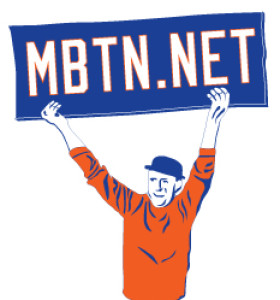I can tell you, it was an Amazin’ Day. Went grocery shopping, took a nap and went to the gym. Then I came back and heard the reports from what was going on at CitiField.
New unis! New numbers!
Let’s start with the alternate blue away jersey. The amazin’ thing about this isn’t the resurrection of the 1987-style script or the black-home style outlined numerals (that will be hard to see) but that it’s a pullover. Same style and silly neckline as the Nationals’ alts. This would appear to supplant the blue away jersey they had been using, but infrequently. I preferred the version with the grey letters.
Will they pair this with grey pants? Blue? Orange?!? I’d like to see the latter.
![]() Now to numbers. Brett Baty whose 22 went to Juan Soto, revealed he’d be wearing No. 7 this year. I can’t tell you how happy it makes me to see that number in circulation again — although 8 would better. Seven had been unissued since Marcus Stroman took it upon himself to shelve it in 2019.
Now to numbers. Brett Baty whose 22 went to Juan Soto, revealed he’d be wearing No. 7 this year. I can’t tell you how happy it makes me to see that number in circulation again — although 8 would better. Seven had been unissued since Marcus Stroman took it upon himself to shelve it in 2019.
![]() Other numbers for new guys on the 40-man roster: Jose Siri wearing 19, which I believe is pulling even with 6 as the most-issued number in team history (I’ll check on that). Infielder Jared Young (who?) in 29; and Jose Azocar in 30.
Other numbers for new guys on the 40-man roster: Jose Siri wearing 19, which I believe is pulling even with 6 as the most-issued number in team history (I’ll check on that). Infielder Jared Young (who?) in 29; and Jose Azocar in 30.
The newly arriving pitchers: A.J. Minter 33; Clay Holmes 35; Frankie Montas 47 and Griffin Canning 55. Then there’s the fringey waiver claims and surprise bullpen candidates I don’t know well yet–Dylan Covey in 54; Justin Hagenman in 51; Kevin Herget in 57; and Austin Warren in 44.
That’s all for now. Have an amazin’ day!









